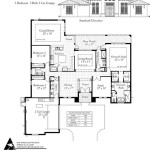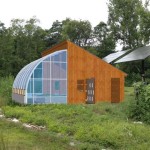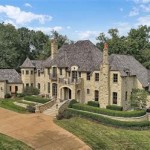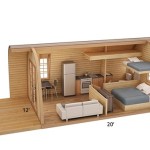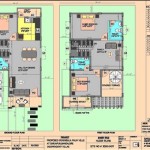Floor Plan: Anne Frank House: A Symbol of Courage and Hope
The Anne Frank House, located in Amsterdam, Netherlands, is a poignant reminder of the Holocaust and the resilience of the human spirit. The building, where Anne Frank and her family hid from the Nazis during World War II, is now a museum dedicated to preserving her memory and sharing her story with the world. The intricate floor plan of the Anne Frank House provides a glimpse into the lives of the people who lived there and the challenges they faced.
Ground Floor: The Shop and the Annex Entrance
The ground floor of the Anne Frank House was occupied by a shop that sold spices and seasonings. Behind the shop was a hidden entrance to the annex, where the Frank family and four other people hid for over two years. The entrance was concealed by a rotating bookcase, which still stands today.
First Floor: The Frank Family's Living Quarters
The first floor of the annex was the living quarters for the Frank family. It consisted of a small living room, a kitchen, and a bedroom for Anne and her sister, Margot. The cramped living conditions were challenging, but the family made the best of their situation. Anne's diary entries often described the everyday routines and interactions within the family.
Second Floor: The Van Pels Family's Quarters
The second floor of the annex housed the Van Pels family, consisting of Hermann and Auguste Van Pels and their son, Peter. They had a living room, a bedroom, and a shared workroom with the Frank family. The Van Pels family were also persecuted for being Jewish, and they shared a similar fate as the Frank family.
Third Floor: The Attic and Anne's Room
The third floor of the annex consisted of a large attic and Anne's room. The attic was a hiding place for all eight people, and it was where Anne wrote her famous diary. Anne's room was a small space, but it was her own sanctuary where she could escape the cramped conditions of the annex.
Secret Passageways and Hidden Spaces
The Anne Frank House is full of secret passageways and hidden spaces that allowed the people hiding there to avoid detection. The most famous of these is the hidden entrance behind the bookcase. There was also a secret bookcase that led to a separate room that was used as a storage space. These secret spaces were essential for the survival of the people hiding in the annex.
A Symbol of Hope and Resilience
The Anne Frank House Floor Plan is a testament to the courage and resilience of those who lived there. Despite the cramped conditions and the constant fear of discovery, the people who hid in the annex found ways to live their lives and to hope for a better future. The Anne Frank House is a reminder of the horrors of the Holocaust, but it is also a symbol of hope and the indomitable human spirit.

Anne Frank Secret Annexe Floor Plan Cool Is Not Really The Word But Will Have To Do For Now Annex House

Image Result For Diagram Of The Secret Annex Anne Frank House

The House And Twin Next Door Were Built By Dirk Van Delft In Year 1635 Building Was Originally Anne Frank Annex

A Small Light Vs The True Story Of Miep Gies And Anne Frank

Anne Frank House Museum In Amsterdam

Pin By Sean Fanning On Diary Of Anne Frank Annex House

Anne Frank S Annex By Killabee On Deviantart

Living As Rosa Anne Frank Haus
Soft Cartography Example Het Achterhuis The Anne Frank House In Amsterdam Scientific Diagram

Understanding The Eternal Appeal Of Anne Frank S Story With All About Author Menno Metselaar Open Book

